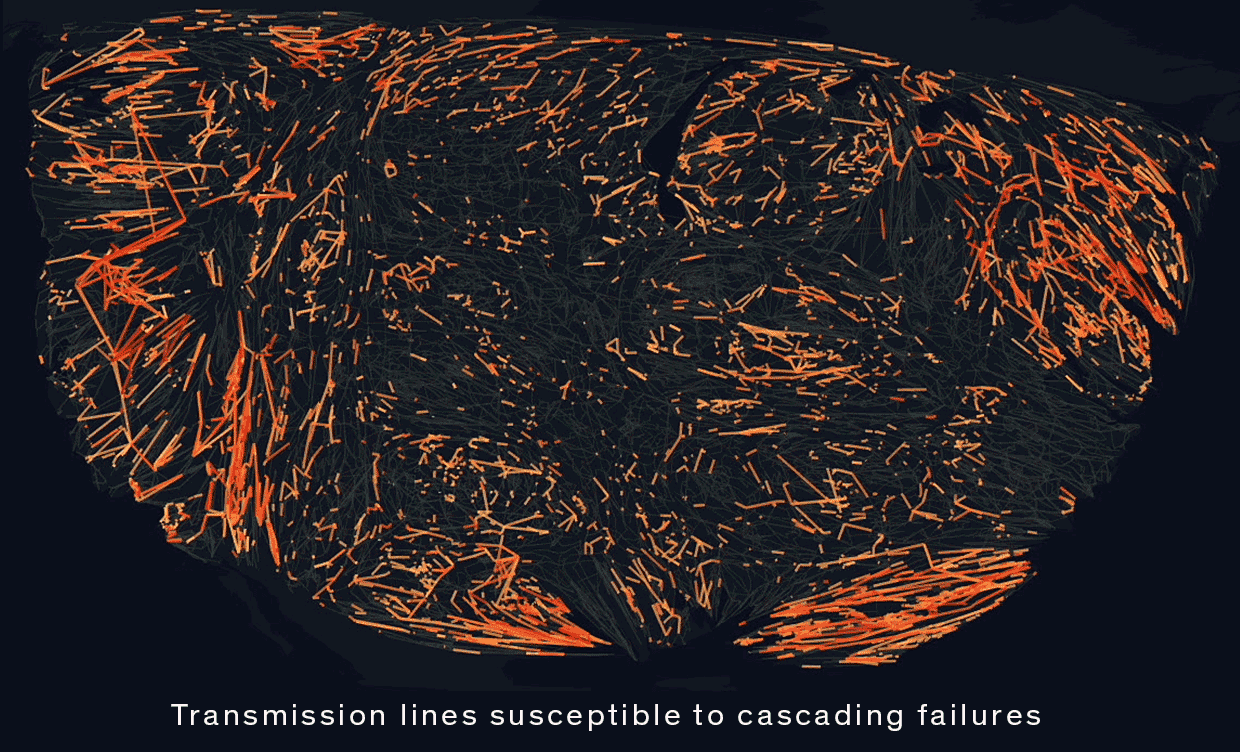Just a few vulnerable patches in North American power grids are responsible for most of the continent’s largest blackouts, a new study finds. These insights could lead to ways to make power grids more robust, researchers say.
Power failures sometimes only have mild and fairly local effects, but other times similar initial failures cascade to cause major failures across power grids. Understanding the causes of these cascades is challenging because the conditions of power grids can vary greatly by peak usage times, level of power demand, seasons and other factors.
To shed light on how failure cascades are triggered, scientists from Northwestern University in Evanston, Illinois. analyzed U.S. Federal Energy Regulatory Commission data regarding the U.S.-South Canada power grid, which has more than 100,000 transmission lines. Using information spanning the years 2008 to 2013, they developed a model of the behavior of these lines within electrical networks across North America.
The research team's simulations revealed that over the entire network, only 10.8 percent of all transmission lines were vulnerable to the kind of "primary failure" that could trigger a cascade. They also found that 85 percent of all primary failures occurred roughly 20 percent of these links, which altogether made up about 2.16 percent of all links. These more-vulnerable components were typically geographically clustered near each other and were often located near densely populated areas.
"In the North American power grid, the set of power lines that are susceptible to failures were found to represent a surprisingly small fraction of the whole network," says study co-author Takashi Nishikawa, an applied mathematician at Northwestern.
Their findings also suggest that power failures cannot spread essentially without bound. Their simulations found that while the physics underlying the spread of power failures do not put constraints on how far a failure can hop in a single step, they generally tend to stay close to where they originated. "The power grid is quite robust against the propagation of failures — perhaps surprisingly robust, when we consider all the complexities involved," Nishikawa says.
These findings "suggest that the vulnerability of individual network components should be considered in prioritizing power line upgrades," Nishikawa says. "Selecting which power lines to upgrade based on the pattern of past or simulated failures would likely be a cost-effective way to mitigate future cascades. How well such a strategy actually works in real power grids needs to be seen, but our findings suggest that this type of failure-based resource allocation is a promising approach."
Understanding how failures might cascade in power grids might also shed light on similar phenomena in other networks, "such as traffic networks, supply chains and food webs," Nishikawa says.
The scientists detailed their findings in the Nov. 17 issue of the journal Science.
Charles Q. Choi is a science reporter who contributes regularly to IEEE Spectrum. He has written for Scientific American, The New York Times, Wired, and Science, among others.



